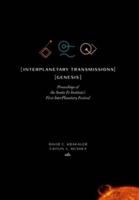Publisher's Synopsis
Aircraft fuel efficiency is a function of many different parameters, including characteristics of the engines, characteristics of the airframe, and the conditions under which the aircraft is operated. For a given vehicle, the airframe and engine characteristics are for the most part fixed quantities and efficiency is primarily a function of operational conditions. One important influence on cruise efficiency is cruise altitude. Various future scenarios have been postulated for cruise altitude, from the freedom to fly at optimum altitudes to altitude restrictions imposed for environmental reasons. This report provides background on the fundamental relationships determining aircraft cruise efficiency and examines the sensitivity of efficiency to cruise altitude. Analytical models of two current aircraft designs are used to derive quantitative results. Efficiency penalties are found to be generally less than 1% when within roughly 2000 ft of the optimum cruise altitude. Even the restrictive scenario of constant altitude cruise is found to result in a modest fuel consumption penalty if the fixed altitude is in an appropriate range. Guynn, Mark D. Langley Research Center WBS 561581.02.08.07.13.14












